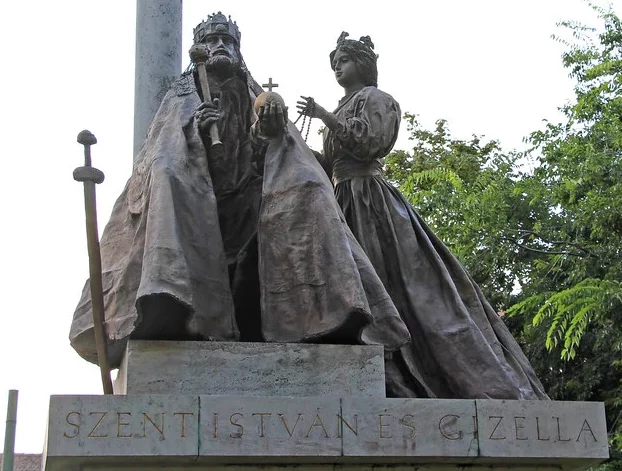What happened with the first Christian Queen of Hungary?

Gisela of Hungary was “part” of the deal sealed between pagan Hungary and the Medieval Christian great power, the Holy Roman Empire. Her duty was to marry Hungary’s first Christian king, Stephen I (1000-1038), help him Christianise the country and build a modern, Medieval Hungarian state. But what happened to her after her canonised husband, Hungary’s first Christian king, died?
Gisela of Hungary (985-1065) was the first queen consort of Hungary, the sister of Henry II, Holy Roman Emperor (1014-1024). She married Stephen I, Hungary’s first Christian king, in 996. The marriage was an important milestone in transforming pagan Hungary into a Christian state. Stephen (originally named Vajk) was the heir of Géza, the leader of the Magyar tribes. Géza decided to open to the West, but his power was weak over the tribes, so founding a modern Medieval state was inevitable to make Hungary stronger and resistant against the well-organised Christian countries.
He probably knew about the fate of the Huns, Avars and other tribes that proved to be great warriors but poor statespersons. As a result, their former glory perished, while their people blended into other locals. Gisela of Hungary was a key to a successful state foundation. She not only meant peace with the mighty Holy Roman Empire but also help from the West to organise a smoothly running state. The couple had two sons, Otto died as an infant. Prince Emeric reached adulthood but died during boar hunting in 1031.
The first Queen of Hungary found herself in a difficult situation after Stephen died
Without a direct heir, Stephen I named Peter Orseolo (1038-1041, 1044-1046) his successor, but Peter failed to become a strong ruler. Neither he nor his adversary, Sámuel Aba, treated Gisela well. As a result, the queen had to flee Hungary in 1044 after Sámuel Aba died, and Péter Orseolo reclaimed the throne for two years.
She went to Passau, joined a nunnery and worked as its head, Rubicon wrote. Hungary’s first queen died in 1065. Her grave became a popular pilgrimage site. She was beatified in 1975. She was not buried with her husband. But in 1996, a millennium after their wedding, part of their remains were united again. Stephen I’s right hand (the so-called ‘Holy Right‘) and a bone from Gisela’s arm was placed in the basilica of Veszprém, where she once lived. Her cross and bones are in Munich.
Interestingly, the only contemporary artefact of Saint Stephen’s age, the coronation pall, is the work of Gisela and her ladies. The pall is displayed in the Hungarian National Museum.

Source:

